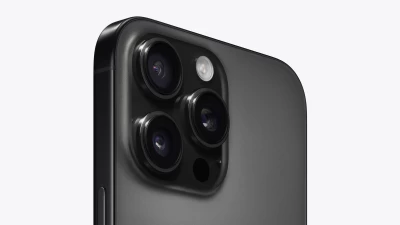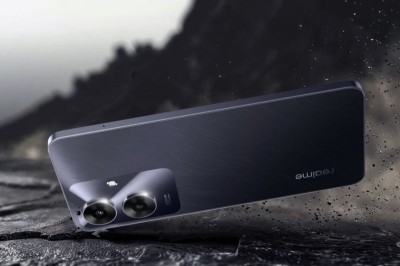Renewable energy refers to energy sources that are recovered naturally and may be utilized without losing finite resources. There are several types of renewable energy sources that are Sunlight, wind, rain, tides, waves, and geothermal heat. Renewable energy technologies create electricity using sustainable ways, as unlike fossil fuels, which are finite and contribute to environmental pollution. Sunlight is converted into electricity using photovoltaic cells or concentrating solar power plants to produce solar energy. Wind power converts the kinetic energy of flowing air into electricity by turning turbines. Tidal and wave energy utilize the force of ocean currents, whereas hydropower harnesses the energy of flowing water. Geothermal energy uses steam or hot water from subsurface reservoirs to tap into the Earth's interior heat. Renewable energy development is vital for lowering greenhouse gas emissions, mitigating climate change, and assuring a cleaner, more sustainable energy future.

Today we will be talking about the solar power only or in other word it is knows as PV or, Photo Voltaic. PV, which stands for Photo Voltaic, but what does it mean and how does this work and also, how we can use it in our daily life to reduce the dependency on the fossil fuel based electricity? But first let’s get to know how electricity is produced typically in a power plant.
Electricity is typically created from fossil fuels (i.e.: Coal, gas and oil) through a process that requires burning these fuels to produce heat, which is then utilized to generate steam. The steam powers turbines that are connected to generators, which generate energy. Here's a more in-depth explanation of the procedure step-by-step:
- Combustion of Fossil Fuels: In power plants, fossil fuels such as coal, oil, and natural gas are burnt in a chamber. This combustion produces heat as a byproduct.
- Heat Generation: The heat produced by the combustion of fossil fuels is utilized to heat water, which causes a generation of steam. Typically, this is done in a boiler.
- Steam Expansion: The high-pressure steam produced by the heated water is fed into a turbine. The turbine blades rotate due to the force of the steam.
- Turbine Rotation: As the turbine blades spin, they are connected to a generator. The rotation of the turbine's blades turns the generator's rotor, which is surrounded by a magnetic field.
- Electricity Generation: Applying the concepts of electromagnetic induction, the rotation of the turbine's rotor inside the magnetic field generates an electric current in the generator's coils. This current is referred to as electricity.
- Transmission: The produced electricity is then transmitted across large distances using power lines, transformers, and other equipment to enhance the voltage.
- Distribution: Finally, local power lines and substations provide electricity to homes, businesses, and industries. Everything from lights and appliances to industries and technological devices is powered by this.

It is extremely important to remember that, while this technique has been the base of global power generation for many years, it is also hazardous for the environment. Carbon dioxide and other pollutants are released into the atmosphere when fossil fuels are burned, leading to air pollution and climate change.
As a result, there is a rising demand for moving to cleaner and more sustainable energy sources, such as renewable energy sources such as solar, wind, hydro, and geothermal power. So, how does a solar power system works?
A solar power system, also known as a solar photovoltaic (PV) system, converts sunlight directly into electricity using solar panels. Here's how a typical solar power system works:
- Solar Panels (Photovoltaic Cells): Solar panels consisted of a number of photovoltaic cells, which are semiconductor devices that convert sunlight into energy. These cells are often constructed of materials such as silicon.
- Sunlight Absorption: When sunlight (photons) hits the surface of the solar panels, it excites electrons within the semiconductor material, generating a flow of direct current (DC) electricity.
- Inverter Conversion: The DC electricity generated by the solar panels passes through to an inverter. The major function of the inverter is to convert direct current (DC) power into alternating current (AC) electricity, which is the kind of electricity utilized in most homes and businesses.
- Electrical Panel and Utility Connection: The inverter's alternating current power is then delivered to the building's electrical panel. This panel distributes energy to the structure's multiple electronic devices, enabling it to power lights, appliances, and other equipment.
- Power Consumption and Grid Interaction: If the solar panels generate more power than the building requires, the extra energy can be sent back into the grid. This happens through a procedure known as net metering. In this case, the electric meter reverses its rotation, thereby crediting the extra energy provided to the system.
- Nighttime and Low Sunlight Conditions: When the solar panels are not producing electricity at night or during periods of low sunshine, the building gets power from the grid as usual.

Solar energy facilities vary in size and design, from relatively small rooftop installations in private residences to large-scale solar farms that contribute to the grid's overall electricity supply. Depending on the scale of solar system we can categorize it into three (3) main domain that are a) Residential b) Commercial and Industrial c) Utility grade or IPP(Independent Power Producer). A solar power system's efficiency is determined by factors such as the quality and orientation of the solar panels, the quantity of sunlight available, and the overall system design. Solar energy is a clean, renewable form of energy that can help reduce carbon emissions and dependency on fossil fuels.
But currently we are in a state where we can’t fully rely on this cleaner and greener energy source. Because, at present time, the efficiency of the solar cell are in between 21-23% which is less comparing to the fossil fuel. But developments are going on, scientists are working on the development of the solar system so that the efficiency could be much higher than the current percentage. But also, as a photo voltaic system needs sunlight to generate electricity, so even though we increase the efficiency we will only be able to use the solar system only in daytime. But as I mentioned earlier, there are other type of renewable energy sources that can even produce electricity 24 x 7 such as Wind Energy, Hydropower, Geothermal Energy, Biomass Energy, Tidal Energy, Wave Energy, Hydrogen Fuel Cells, Ocean Thermal Energy Conversion (OTEC), Bioenergy etc.
In next article, we will be talking about
- In-depth Solar PV system
- Type of PV system
- How does a solar PV system works?
Till then stay safe, keep learning. You can also let us know about your thoughts. Just email us at: support@specdecoder.com

















